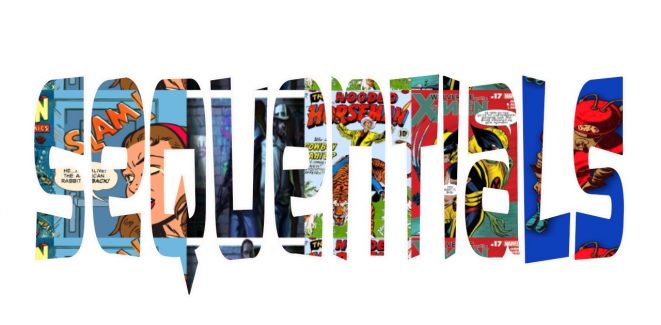Sequentials is accepting submissions of original visual scholarship for our third Call for Comics. In conjunction with and inspired by an ImageTexT special forum on the same topic, we are interested in works on comics and fine art which expand and pluralize our understanding of the relationships between these areas. In his introduction to the catalog for a 1967 exhibit on comic strips at the Musée Des Arts Décoratifs, Palais du Louvre, organized in part by the Société civile d’études et de recherches des littératures dessinées, Tarzan artist Brune Hogarth wrote of comics that, for want of an adequate definition of the form, “perhaps the art we are talking about is not art at all.” Hogarth asked “to what place shall we assign its formal codes of form and structure, depiction and abstraction, its artistic and aesthetic expression–its imagery, calligraphy, and iconography?” While the definition Hogarth said was then unwritten has been supplied many times over, many of these questions remain unresolved.
In pointing out how comics troubles the differences between painting, literature, and theater, in being “all of these, yet none,” Hogarth captured how comics have troubled definitions of, responded to, and at times opposed the “fine arts.” Appropriations of comics imagery by artists like Roy Lichtenstein and painterly work in comics, such as Kerascoët or Maggie Umber, are just the most obvious examples of how comics and fine art traditions inform and change one another. Even exclusion from “fine arts” institutions has impacted how comics and comics studies has created its own prizes, schools, and publications, a kind of counter tradition of art and art criticism. Rather than staging a debate about comics’ inclusion or exclusion from a theoretical canon of fine art mediums, we are interested in recognizing the ways comics and work traditionally considered the fine arts have been mutually influential and how the contestation of such inclusion or exclusion has affected comics and comics studies. Possible topics may include, but are not limited to:
- Relationships between fine arts, ‘crafts’, commercial art and illustration, and cartooning or comics, including formal or economic comparisons between these areas or artists whose work spans these areas
- Formal relationships between cartooning or comics and fine arts which capture or manipulate time, like performance or dance
- Artists and critics in comics who have troubled, rejected, or contested definitions of ‘fine art’ itself
- Exceptional artists in comics whose work has been received as fine art, and reception contexts in which comics are treated as fine arts
- Comics and fine art in international and transnational contexts
- The reciprocal influence of any fine arts and comics on the technical production of each mode, or artists who particularly embody that reciprocity
- Artists’ books as comics and comics as artists’ books and handmade, one-of-a-kind, and conceptual comics
- Art comics publishers and the archival practices of comics collectors, and the influence of fandom cultures on comics and/as art
- Comics in art galleries, art museums, and arts archives, including museums of comic art and exhibits of comics art or original comic pages in traditional fine art museums
- Fine art or fine artists who make particular use of cartooning skills, such as Goya or Grosz and comics artists who make use of fine art techniques, like collage, such as Jack Kirby or Lynda Barry
- Art critical or theoretical readings of particular comics
- Readings of particular works of fine art informed by comics theory or theories of sequential art
- New theoretical approaches to or articulations of sequential art and/as fine art
To submit, please upload a submission title, cover letter, and high-resolution image(s) to the “Sequentials 3 – Comics And/As/Against Fine Art” category of the Submittable platform here by June 1, 2017. If you have any questions, please contact Fiona Stewart-Taylor at F.Stewarttaylor@UFL.Edu
